You’re sitting in a PUBG lobby, trying to come up with a username that doesn’t look like every other generic gamertag staring back at you. Or maybe you’re setting up a new Instagram profile and realize your name gets lost in a sea of identical handles. That moment of frustration—when you can’t figure out how to make your digital presence actually feel like you—is exactly when most people discover stylish name generators.
These tools have quietly become essential for millions of gamers, content creators, and social media users who want their online identity to stand out without needing design skills or hours of manual formatting. What makes them work is a combination of Unicode technology (a universal text system that’s been around for decades but most people never think about) and something deeper: our psychological need to differentiate ourselves in crowded digital spaces where first impressions happen in milliseconds.
This article breaks down both sides of that equation. You’ll see how stylish name generators actually function under the hood, using character encoding to transform plain text into eye-catching designs. But more importantly, you’ll understand why these tools have exploded in popularity across gaming platforms, social networks, and messaging apps—and what that reveals about how we build identity online.
What Is a Stylish Name Generator?
At its core, a stylish name maker is a Unicode-based text converter that takes your ordinary letters and transforms them into decorative, eye-catching designs packed with special characters and symbols. Think of it as a translation tool, but instead of changing languages, it’s remapping your text into entirely different visual styles that still say the same thing.
The process is dead simple. You type in plain text like “Alex,” and the generator instantly maps each letter to stylized Unicode equivalents—producing outputs like “𝔸𝕝𝕖𝕩” or “ꜰʟᴇx” or “𝓐𝓵𝓮𝔁”. The entire conversion happens in real time, usually in under three seconds, and you get a copy-paste output ready to drop into any platform without needing downloads, apps, or technical knowledge.
What makes these tools practical is how universally they work. A stylish name generator creates designs that function seamlessly across Instagram bios, TikTok profiles, WhatsApp status updates, PUBG lobbies, and Free Fire clan tags—basically anywhere that supports Unicode rendering, which is nearly every modern platform. No special software required on your end or anyone else’s. The styled text just appears correctly for everyone viewing your profile, regardless of whether they’re on Android, iOS, or desktop.
Here’s why that matters:
- Zero friction: No downloads, no installations, no signups required
- Instant results: Real-time preview shows you dozens of style variations as you type
- Universal compatibility: Works on Instagram (150-character bio limit), TikTok (30-character username cap), WhatsApp (139-character About section), PUBG (16 characters), and Free Fire (12 characters)
- Free and unlimited: Generate as many variations as you want without hitting paywalls or restrictions
But how do these tools actually work under the hood? The answer lies in a universal text system most people have never heard of.
The Tech That Makes It Work
Unicode is the reason any of this works at all. It’s a universal character encoding standard maintained by the Unicode Consortium that lets computers display text from every writing system on the planet—from Arabic to Emoji, ancient Egyptian hieroglyphs to modern mathematical notation. As of Unicode 17.0 (released September 2025), the standard includes over 154,000 characters spanning 161 scripts, with new symbols and writing systems added in each version.
Most people only use a tiny fraction of this library. When you type on your phone or laptop, you’re pulling from the Basic Multilingual Plane (BMP)—the first 65,536 characters that cover everyday letters, numbers, and punctuation. But generators tap into specialized blocks that were originally designed for entirely different purposes, then repurpose them for visual styling.
Here’s where the magic happens. Unicode fonts get created when generators map your plain text to characters from these specialized blocks:
- Mathematical Alphanumeric Symbols (U+1D400–U+1D7FF): This block contains styled letter forms meant for math notation—bold serif (𝐀𝐁𝐂), italic sans-serif (𝘈𝘉𝘊), script/cursive styles (𝓐𝓑𝓒), and blackletter/fraktur variants (𝕬𝕭𝕮). These weren’t intended for social media names, but Unicode’s design makes them accessible anywhere text renders.
- Greek and Cyrillic letters: Characters like Ꮥ, Ꮦ, Ꭹ from the Cherokee Unicode block get borrowed to create ᏕᏖᎩᏝᎥᏕᏂ text effects because they visually resemble Latin letters but carry that distinct, decorative edge.
- Decorative symbols and borders: Ornamental characters (★, 彡, ༺, ༻, ꧁, ꧂) come from blocks like Miscellaneous Symbols, CJK Symbols, and Tibetan. Gaming communities especially favor rare symbols like 亗 and 彡 for clan tags because they signal status—not everyone knows where to find them.
- Emoji and special characters: Standard emoji (🔥, ⚡, ✨) mix seamlessly with styled letters since they’re all part of the same Unicode ecosystem.
The reason these styled names work everywhere is simple: modern devices and platforms universally support Unicode rendering through UTF-8 encoding, which has become the default for nearly every webpage and app since 2025. When you paste a stylish name generator output into Instagram, PUBG, or WhatsApp, those platforms just read the Unicode characters and display them correctly—no special fonts or plugins required on anyone’s end.
But there are limits worth knowing. Some platforms actively block certain decorative symbols to prevent spam or visual clutter (Twitter/X has historically been stricter than Instagram about this). Gaming platforms enforce hard character limits: PUBG caps names at 16 characters, Free Fire at 12, which means heavily decorated names sometimes need trimming. And there’s an accessibility concern—screen readers designed for visually impaired users can struggle with complex Unicode fonts because the characters weren’t originally meant to represent regular text. The Mathematical Alphanumeric Symbols block documentation explicitly warns against using these characters as substitutes for normal text styling, though that obviously hasn’t stopped millions of people from doing exactly that.
The Psychology Behind Digital Identity Creation
Standing Out in Digital Crowds
When millions of users compete for attention on Instagram feeds, TikTok’s For You page, or PUBG leaderboards, a stylish name becomes one of the fastest ways to signal that you’re not just another default account. Research on first impressions shows people form snap judgments about others within 100 milliseconds of initial contact. Online, where there’s no face-to-face interaction, your username carries even more weight because it’s often the first (and sometimes only) piece of identity people see before deciding whether to follow, friend, or engage with you.
Studies on username psychology confirm this intuition. Simple, complex, or memorable names directly influence how trustworthy and competent people perceive you to be. A generic handle like “user12845” signals nothing about personality or effort. But a crafted digital identity with deliberate styling tells viewers you’ve invested thought into your presence, which subconsciously elevates your perceived status in crowded spaces where attention is the actual currency.
Gaming Identity and Reputation
In competitive gaming communities like PUBG Mobile, Free Fire, and BGMI, your gaming nickname isn’t just decoration—it’s psychological warfare. Players with intimidating names featuring rare Unicode symbols (༄ᶦᶰᵈ᭄, ꧁༒☬𝓚𝓲𝓷𝓰☬༒꧂) build reputation before a single shot is fired. Clan tags with unique styling reinforce group identity and create visual intimidation on leaderboards and kill feeds, where your name appears dozens of times per match.
Regional gaming cultures have evolved distinct naming conventions. In Pakistan, India, and the Middle East, players mix Urdu and Hindi scripts with English letters and decorative symbols—creating hybrid styles that signal both gaming skill and cultural pride. This localization matters because digital identity formation happens within communities, not in isolation.
Building Your Online Brand
For content creators and influencers, a memorable name style becomes branding infrastructure. It’s the anchor element in bios, comment sections, and shares—the text people search for when they half-remember your content but can’t recall your exact handle. A well-styled name increases recall and makes your content easier to recommend because our brains latch onto visual distinctiveness.
This connects to Goffman’s self-presentation theory, which argues we constantly perform curated versions of ourselves depending on the audience. Styled names let us craft idealized digital personas distinct from our legal identities while remaining recognizable to our communities—controlled anonymity with strategic visibility. We’re not pretending to be someone else; we’re emphasizing specific traits we want amplified in digital spaces where text and symbols do the work that clothing, posture, and voice do offline.
Understanding the psychology is one thing—seeing it in action across platforms reveals just how widespread this phenomenon has become.
Popular Use Cases Across Platforms
Gaming Platforms
Players using a PUBG name generator create clan tags with rare symbols like ༄ᶦᶰᵈ᭄ or 彡 that separate competitive players from casuals. These tournament-ready nicknames display correctly across devices, making them essential when your name appears in kill feeds and leaderboards. Character limits matter: PUBG Mobile allows 16 characters while Free Fire caps at 12, so generators optimize for both without trimming identity-defining symbols.
Smart gaming names balance readability with style. Overloading symbols might look impressive but becomes unreadable during callouts or in tournament brackets. Regional preferences are distinct: Pakistani and Indian communities favor Urdu/Hindi hybrid styles like ꧁༒☬𝓚𝓲𝓷𝓰☬༒꧂ that signal both skill and cultural pride.
Social Media
Creators use Instagram stylish names to boost memorability within the 150-character bio limit. Profile names with Unicode fonts increase clicks and follower recall because styled text breaks pattern recognition. Niche branding varies: fitness influencers use bold styles (𝗕𝗨𝗟𝗞), while artists prefer cursive aesthetics (𝓒𝓻𝓮𝓪𝓽𝓲𝓿𝓮).
Test styled names on mobile first—over 80% of social traffic is mobile, and some Unicode fonts render as empty boxes on older devices.
Messaging Apps
WhatsApp users style About sections and status updates with decorative borders like ━━━━━━ೋღ♡ღೋ━━━━━━. Creative group names transform generic chats into memorable spaces (“꧁༺Family༻꧂”).
Multilingual communities mix Urdu/Hindi scripts with English to create hybrid aesthetics that maintain cultural authenticity in modern digital spaces. This dominates South Asian social media and gaming, where language choice becomes identity signaling.
Conclusion
Stylish name generators represent more than just text styling tools—they’re where Unicode technology meets fundamental human needs for self-expression and social identity. What began as a niche utility has evolved into essential digital infrastructure, powering millions of gaming profiles, creator brands, and social media identities across platforms.
As online spaces grow more crowded and attention spans shrink, these tools offer a straightforward way to craft digital personas that actually stand out. The styled names stick in people’s minds not through complexity, but through visual distinctiveness that our brains process before we even read the actual letters.
Whether you’re building a competitive gaming reputation in PUBG or Free Fire, strengthening your creator brand on Instagram, or simply want your WhatsApp profile to feel more intentional, experimenting with different name styles reveals what resonates with your specific audience. The key is understanding how different platforms handle Unicode rendering and which styling approaches perform best within your niche—balancing memorability with readability, cultural authenticity with modern aesthetics






